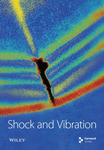Transmissibilty-Based Operational Modal Analysis for Flight Flutter Testing Using Exogenous Inputs
Abstract
During the recent years several new tools have been introduced by the Vrije Universiteit Brussel in the field of Operational Modal Analysis (OMA) such as the transmissibility based approach and the the frequency-domain OMAX concept. One advantage of the transmissibility based approach is that the ambient forces may be coloured (non-white), if they are fully correlated. The main advantage of the OMAX concept is the fact that it combines the advantages of Operational and Experimental Modal Analysis: ambient (unknown) forces as well as artificial (known) forces are processed simultaneously resulting in improved modal parameters. In this paper, the transmissibility based output-only approach is combined with the input/output OMAX concept. This results in a new methodology in the field of operational modal analysis allowing the estimation of (scaled) modal parameters in the presence of arbitrary ambient (unknown) forces and artificial (known) forces.




